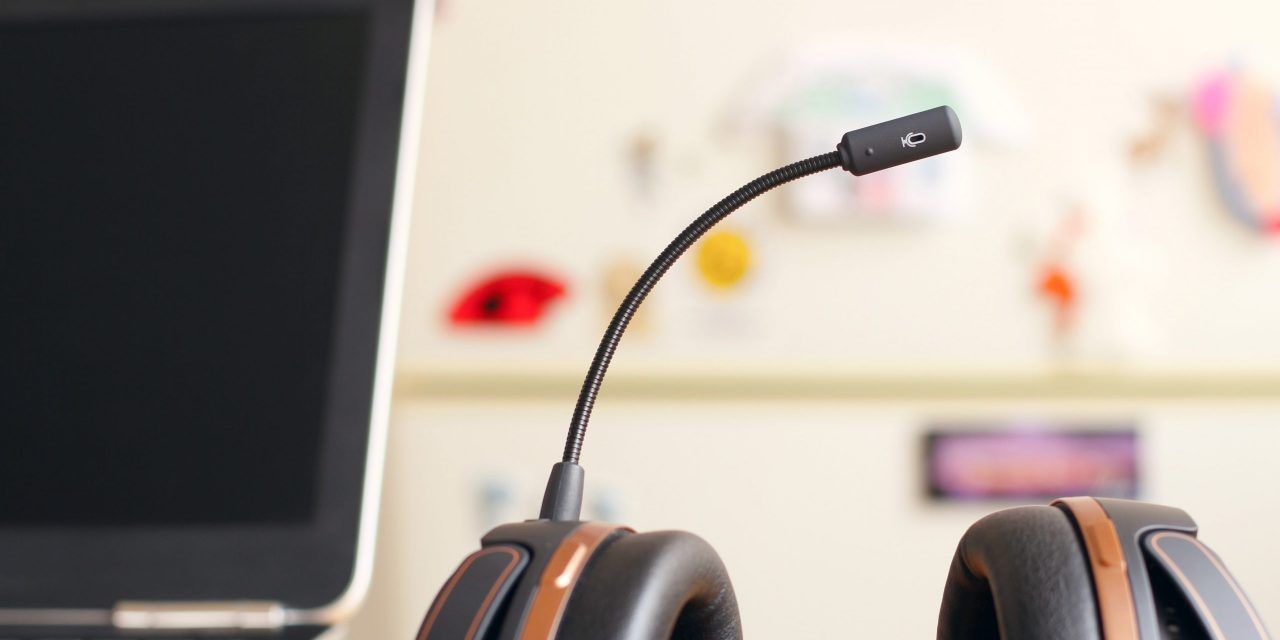In the mid-2000s I spent many Fridays waking up much earlier than I really wanted to, packing my wheelie suitcase, taking the Northern Line to Kings Cross and then the train to Peterborough. Most Fridays involved advising a lay client before they entered a plea, but some Fridays meant a series of very short hearings in which I answered in the affirmative that we were ready for trial. That was it. Nothing else. ‘Yes, Your Honour’. Sure, the full English breakfast cooked to order on Great North Eastern Railway (GNER) made it a little easier to say three words per hearing, but ultimately this felt horribly inefficient. Why, I wondered, why could I not say yes over the phone while I ate toast and drank coffee in my pyjamas? Probably because I would spill coffee over myself and it would become ‘Yes, OUCH OUCH OUCH, Your Honour’.
Fast forward to March 2020 and my dream had come true. I had long since left the Bar, but surely others would enjoy this toast, coffee, pyjama, pre-trial nirvana? If only it were that simple. I know it wasn’t for a lack of effort by practitioners, the Judiciary and court staff. But the reality is, constructing an online court service is harder than constructing one from bricks and mortar. More so in a global pandemic. More on that at the end of this article, but for now, I want to concentrate on how advocacy on the internet shares much of the DNA of advocacy in person, with a few small differences.
My experience of online meetings comes from my time in employment after being at the self-employed Bar. I was at a university with several campuses across England, so the norm when meeting with others was for it to be online. First through Skype and then later, Teams. We had been through the difficulties of trying mixed mode meetings; some people in a room, others online. We resolved that everyone being online, even if some were in the same building, was a preferable experience for all. I have struggled with a headset or two, where to position my laptop and the distraction of the internet. Over the last year I have taught students at Virtual Cumberland Lodge days and been on the receiving end of their advocacy. With that in mind, let’s look at the technical challenges first.
The Joy of Tech
Can you be heard? The quality of an internal microphone on a laptop can vary hugely, as can the sort of microphone your machine has built into it. A cardioid microphone is designed to receive sounds from a specific direction and eliminate those around it, whereas an omnidirectional mic, the opposite, will pick up anything in its vicinity. Worse still, as you double the distance from your mouth to the microphone you more than double the degradation in sound quality. A built-in microphone is handy for occasional use but far from ideal for prolonged periods of speaking. The solution lies in an external microphone. One that can be optimised for your environment so that you can be heard, but nothing else. Two solutions are available here. The first is an external microphone, but the real risk is that you will get a nasty feedback loop as it picks up the sound coming from your computer so in order to make this an effective option, it needs to be paired with a set of headphones. Therefore, the second solution is a pair of headphones with a built-in microphone which, due to the proximity to your mouth, will improve sound quality no end. Headphones are not without their controversy. There are some who think that they don’t look professional. Sure, you wouldn’t wander into a courtroom with an oversized pair of headphones, but then again you are not in a physical courtroom. By the same token, you would not deliberately muffle your voice in a physical courtroom or otherwise prevent it from being heard clearly. While there is much we can replicate between modalities, there will be some differences and in the conflict between aesthetics and sound quality, I suggest the latter should reign supreme.
Can you be seen? Thankfully, built-in cameras in laptops are significantly better than microphones, so unless you have a very old machine with a fuzzy camera, picture quality will not be an issue. Instead, the key factor is positioning your camera so that you are neither a dot on the horizon, nor so close up that you’re recreating the Blair Witch Project (and for the older gentlemen out there, showing why you probably need to invest in a nose hair trimmer). Raise the height of your camera to eye level either with a couple of books, or better still, a laptop stand that has the added advantage of providing a more ergonomic position when you type.
Familiarity. Perhaps the greatest challenge back in March 2020 was getting to grips with new software. For some, Zoom was what a particularly fast car did, Skype a typo, and Teams what one followed on Saturday afternoon. All have passed into common parlance in a short space of time. If you’ve used more than one, I hope you’ll agree that using the second was easier than the first. You had some idea what buttons you might see on screen, how they worked, what was expected of you and most importantly how to mute and unmute. But the step between using the first piece of software and not taking part in a video conference at all was a much bigger jump. Hopefully we’re all past that stage now, but taking some time to explore software in a safe environment is useful, as I am sure the platforms used will change and evolve. Knowing, for example, whether you join on mute, or must manually select that, can save embarrassment at the start of a hearing.
Distraction. A fairly serious addiction to Twitter has meant this article has taken me longer to write than it really should. The last sentence was not written in one go because I heard my phone buzz and felt the need to check what it was. You may have far more self-restraint than I have, but if I am on a video call then I have to shut off Twitter, WhatsApp and anything else capable of distracting me. My phone is on silent and out of reach; I know I do not possess the control to ignore it otherwise. Even if you do have more self-control than me (a low bar) I would recommend learning how to set your laptop to ‘Do not disturb’ so that your submissions aren’t interrupted by the pinging noise of the latest meme to land in your inbox.
Your Voice Online
Effective advocacy is a combination of factors. It is more than merely the words you say, but how you say them. Trite, I know, but for most, delivering your submissions or questioning a witness in exactly the same way as you would in a courtroom when in fact you are in your living room, is unlikely to have the same effect. At the same time, if you are not effective in a courtroom it’s unlikely that you will be remotely, unless the changing factors magically mask your foibles.
Leaving to one side technical challenges like poor internet connectivity that might distort your online presence, it is important to consider that the medium itself mutes the effectiveness of your voice. For those who stand up in court but now find themselves sitting in a chair you might find that your voice is not quite as ‘big’ as it was in a courtroom. If you want to be really creative you could try a standing desk or rigging up a camera on your wall so that you stand up while you address a virtual court. Your voice travelling through the ether will also require some modulation of your tone, pitch, pace and volume. I find listening to someone when I am online a little more taxing than in person. If they speak quickly it makes it more difficult regardless of mode, so consider that your listener has a more difficult job and slow it down a little. In terms of volume, you may need to soften a little to stop your voice distorting over the ether. Or adjust the sensitivity of your microphone. Or both. Next, intonation. That too gets flattened online. Like making a pâté where you have to over-season it for the final product to taste just right, you may need to overcompensate a little for this change. The result is that your online advocacy voice can end up sounding different to your one in person. It’s still you. The words are still yours but you are adapting to the situation you find yourself in. Still not convinced? Ask someone you trust to have a video call with you and record it. Try your courtroom advocacy and then a version adapted to consider the points above. Watch the recordings and see if there is a difference.
A final point here relates to the etiquette of speaking online. You will have already experienced the ‘crossroads effect’ (never heard of it? That’s because I just invented the name) of everyone trying to speak at once. In a room in person it is much easier to judge who is about to speak, when to pause, and when it’s your turn. Not so online where, audio delay aside, it is all too easy for everyone to try and speak at the same time as they approach the crossroads. Pausing for a moment when you think someone has finished speaking just to check if they really have or if instead it is a gap in the middle of what they are saying will help alleviate the effect. Either that or we are going to have to move to a system of someone having central control of the mute button.
The Future of Online Courts
I finish this article by briefly touching on something that could be the subject of an article by itself. The physical court system works because of the tireless work of court staff, the judiciary and legal professionals. It is tried and tested with everyone having a defined role. Over the course of the pandemic there have been reports of parties to proceedings being required to arrange online hearings, to ensure witnesses and others have access to technology or indeed the link to get online. None of this would be the case in the physical world. Parties would not be asked to arrange a room, set out the chairs and make sure everyone knew how to get there.
Similarly, private spaces for professionals to speak outside the courtroom to each other or their clients is not a luxury but a necessary feature of a functioning court system. Accepting that online courts were set up in a hurry to meet an ever-evolving crisis that gripped the world, we can forgive the fact that ad hoc replacements had to be found.
But we are now hopefully coming to the end of a turbulent 18 months and it seems that online courts are here to stay for some hearings. Court staff, professionals and the public need certainty and a system that is fit for purpose. There needs to be jurisdiction-wide protocols on the operation of online courts, adapted for the various courts and tribunals, but at the heart, a spine that leverages the advantages that online can deliver while appreciating that some hearings will be better conducted in person. Perhaps then the Bar can concentrate on in-person trials but short administrative hearings without leaving their home.

Ishan Kolhatkar was Called to the Bar in 2002 and was in chambers until 2011. He then taught on the Bar Course before leaving to pursue a career in Education Technology but retains a door tenancy. He is also Executive Strategy Officer at the Charity, Bridging the Bar.
Ishan enjoys cooking and tweeting photos of his food. Probably in equal measures.





